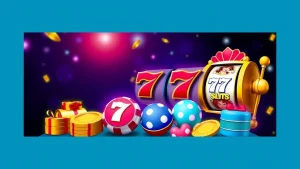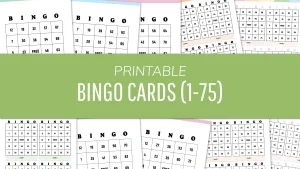Slot Mathematics and Probability Models for Serious Players
5 min read
Let’s be honest. The casino floor is a symphony of sensory overload. The flashing lights, the chiming melodies, the occasional roar of a jackpot win. It’s easy to get swept away by the spectacle. But for the serious player—the one who wants to look behind the curtain—the real story isn’t in the lights. It’s in the cold, hard math.
Understanding slot mathematics won’t let you “beat” the house in the long run. That’s the first and most important rule. But it will transform you from someone just pushing a button into someone who understands the game they’re playing. It’s the difference between guessing and knowing.
The Engine Under the Hood: RNG and RTP
Before we get into the numbers, you need to know what’s powering the machine. Forget any myths about “hot” or “cold” streaks being part of a machine’s cycle. Modern slots, both online and physical, are run by a Random Number Generator (RNG).
Think of the RNG as a microscopic croupier spinning a roulette wheel with billions of numbers, thousands of times every single second. When you hit ‘spin’, it simply grabs the latest number and translates it into a symbol combination on the reels. The result is determined the instant you press the button. Past spins have zero influence on future ones. Each spin is a unique, independent event.
Now, how does the casino make its money? That’s where Return to Player (RTP) comes in. RTP is a theoretical percentage that indicates how much of all the money wagered on a slot machine will be paid back to players over a massive number of spins—think millions.
So, a slot with a 96% RTP will, in theory, return $96 for every $100 wagered over its lifetime. The remaining 4% is the house edge. It’s a long-term statistical average, not a promise for your one-hour session.
Beyond RTP: Volatility and Variance
Here’s where many players stop. They check the RTP and think that’s the whole story. But honestly, RTP is only half the picture. The other, often more crucial half for your bankroll, is volatility (also called variance).
Let’s use an analogy. Imagine two savings accounts. Both promise a 5% annual return.
- Account A (Low Volatility): You earn a little bit of interest every single month. Steady. Predictable.
- Account B (High Volatility): For 11 months, you earn nothing. Then in the 12th month, you get the entire 5% return plus a big bonus all at once.
Both have the same overall return, but the experience is wildly different. Slots work the same way.
| Volatility Level | Win Frequency | Typical Win Size | Best For… |
| Low | Frequent | Small (often less than your bet) | Players with smaller bankrolls, longer sessions |
| Medium | Moderate | Moderate | A balance of excitement and sustainability |
| High | Infrequent | Can be massive (1000x+ your bet) | Players chasing big jackpots, comfortable with long dry spells |
Calculating the Odds: It’s Not as Simple as It Looks
You might think, “Well, if there are 10 symbols per reel, the odds of hitting the jackpot on a 3-reel machine are 1 in 10 x 10 x 10, which is 1 in 1000.” That would be nice and simple, wouldn’t it? But that’s not how it works anymore.
Modern video slots are far more complex. Here’s why the math gets messy:
- Virtual Reel Mapping: A physical reel may have 20 stops, but the virtual reel it maps to could have 256 positions. The blank stops are just given more positions on the virtual reel.
- Multiple Paylines and Ways to Win: Games with 243 or even 100,000+ ways to win mean the probability of any specific combination is minuscule, but the probability of any winning combination is much higher.
- Weighted Reels: Not every symbol has an equal chance of landing. Common symbols are “weighted” to appear more often, while lucrative jackpot symbols are assigned a very low probability.
This is all deliberately designed by the game’s probability model. The math is hidden in the code, creating that perfect blend of frequent small wins and rare, exciting big ones.
The House Always Wins… In the Long Run
This is the core concept that serious players accept. Probability is a law of nature when given enough trials. The RNG ensures that over millions of spins, the machine’s performance will converge almost exactly on its programmed RTP.
Your session, however, exists in the short run. And in the short run, variance is king. You can absolutely be significantly up or down compared to the RTP. That’s where the “gambling” part happens. The math guarantees the casino’s profit over time, but it also guarantees the possibility of your short-term win.
A Practical Model for Smart Play
So, you can’t change the math. But you can use it to inform your strategy. Here’s a practical approach.
- Choose Your Game Based on Your Goal. Want a long, entertaining session? Pick a low-volatility game with a high RTP (look for 96% or above). Are you dreaming of a life-changing hit and have the bankroll to endure the drought? Then high-volatility is your game, even if the RTP is slightly lower.
- Understand the Paytable. The paytable isn’t just a list of prizes. It’s a map of the game’s volatility. If the top prize is 10,000x your bet but the mid-level wins are weak, that’s a high-volatility signature.
- Model Your Bankroll. This is non-negotiable. For high-volatility slots, you need a bankroll that can withstand hundreds of spins without a significant win. A good rule of thumb? Don’t bet more than 1% of your total session bankroll on a single spin.
- Ignore the “Due” Fallacy. The machine is not “due” for a win. The RNG has no memory. Every spin is a new game with the same odds as the last.
The Final Reel
At the end of the day, slot mathematics reveals a profound truth about the game. It’s a beautifully engineered system of chance, designed to provide excitement within a framework of guaranteed profitability for its operator. Knowing this doesn’t spoil the fun. In fact, it can enhance it.
You’re no longer just hoping. You’re participating in a complex dance of probability, understanding the rhythms of variance, and making informed choices about the kind of experience you want to have. The math is the map. You’re still the one choosing the adventure.








